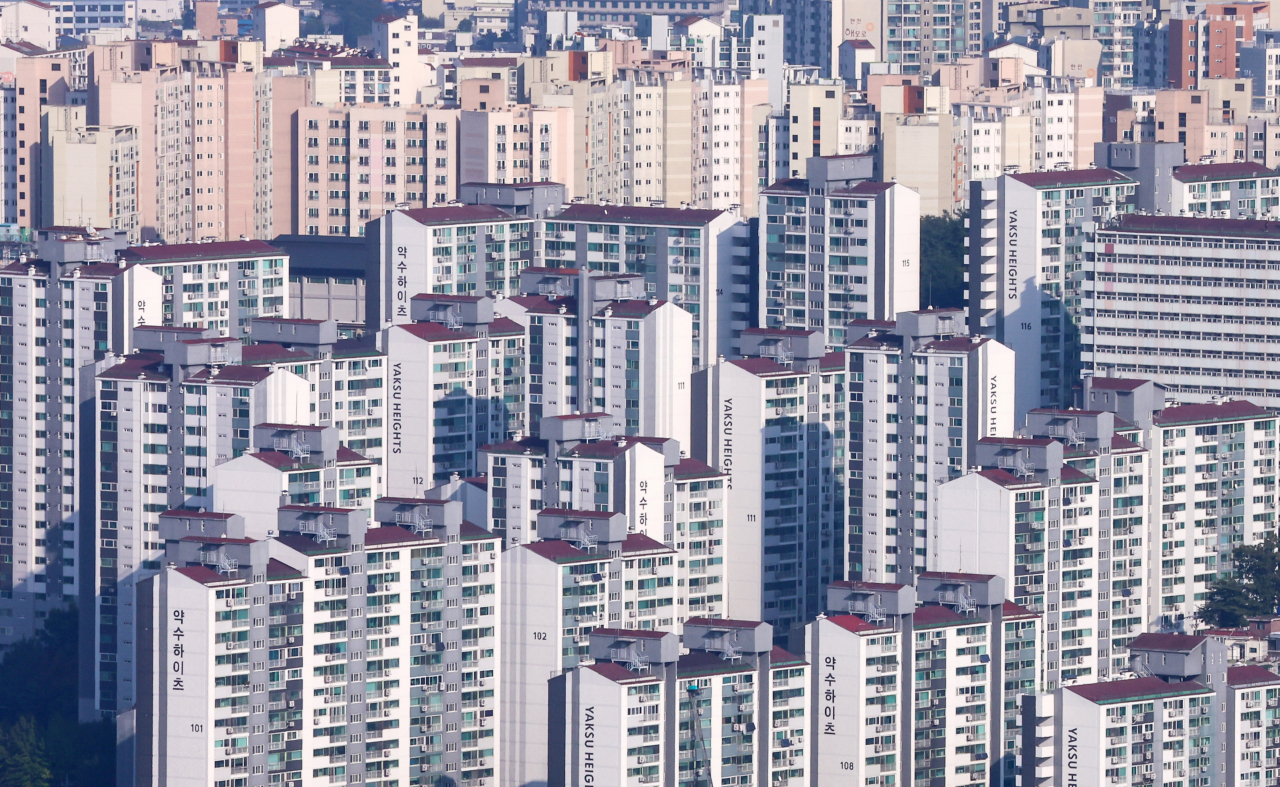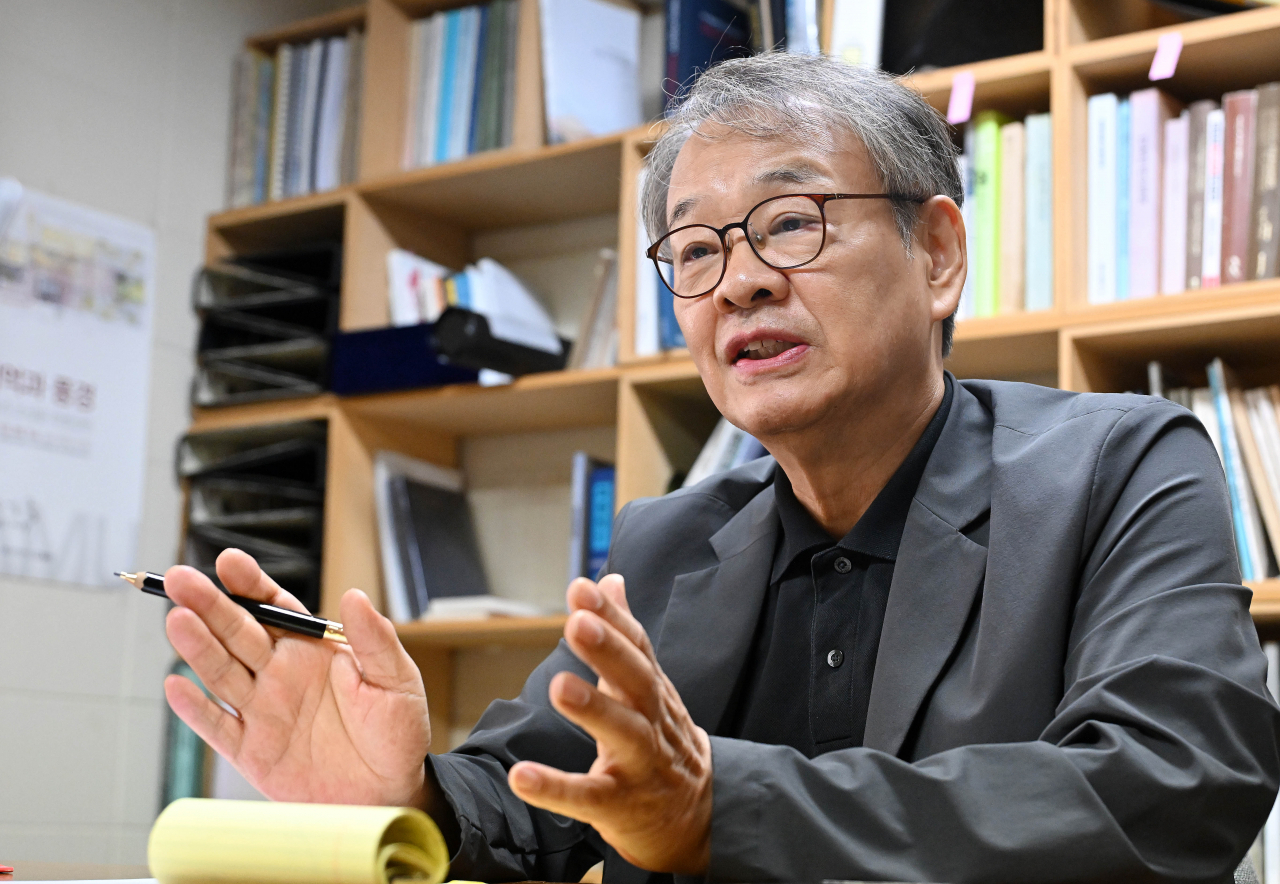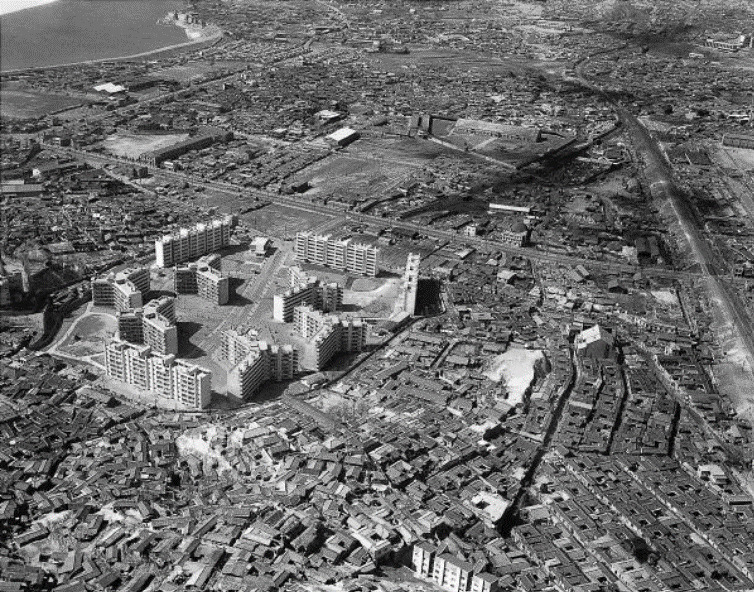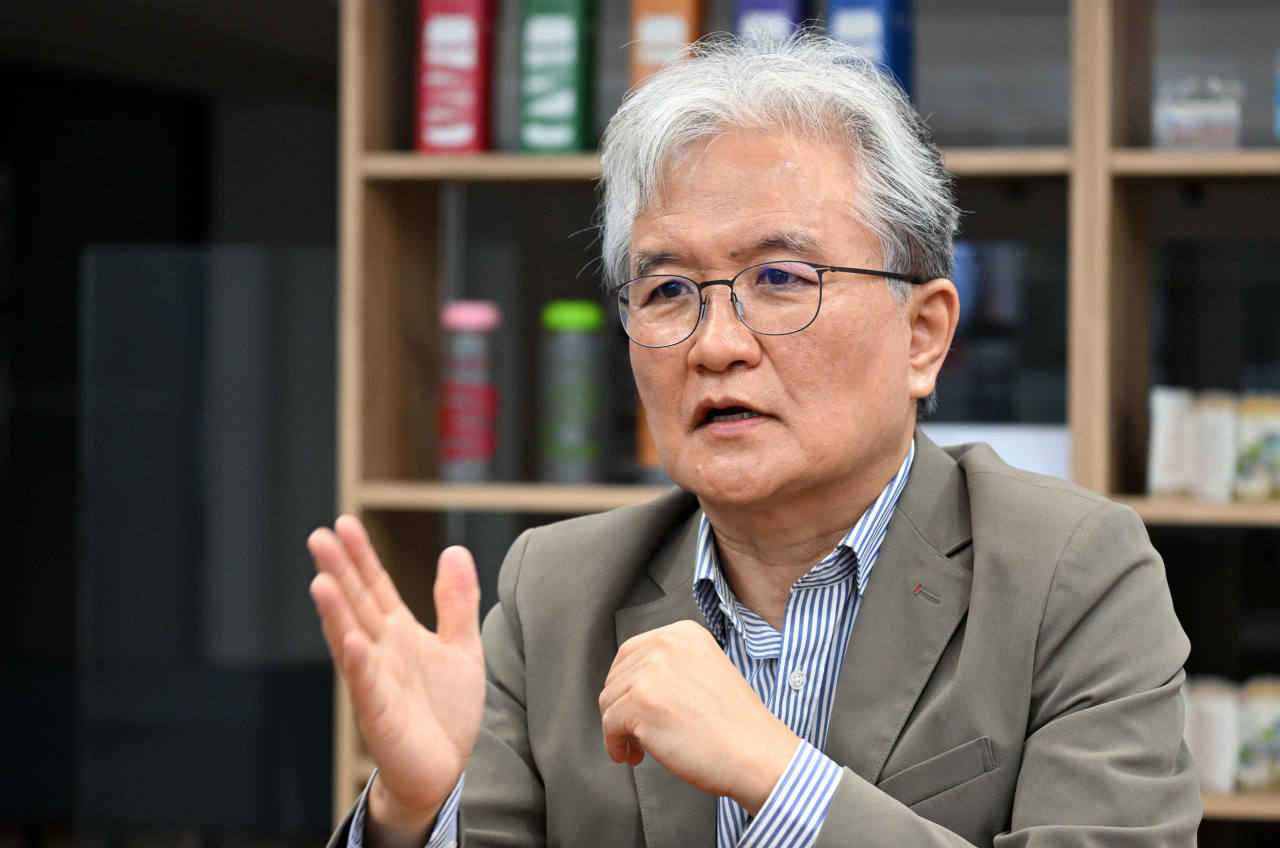
 |
| A view of an apartment complex in Seoul seen from Namsan in central Seoul on Sunday (Yonhap) |
When Rose chants "apateu, apateu" in the hit song "APT.," most Koreans of a certain age will think "apartment buildings," not the drinking game that inspired the K-pop singer.
The ubiquity of cookie-cutter apartments that look pretty much the same all over urban South Korea may be a curiosity to most outsiders but, for the majority of Koreans, they represent an ideal living environment and crucial investment.
Some 62.9 percent of Korea's housing consists of apartment buildings -- defined as multiunit housing five stories or higher -- as of 2020 according to the Architecture and Urban Research Institute.
Korean-style apartment buildings differ from those in megapolises such as New York or Tokyo: They are usually arranged in large complexes with amenities such as retail shops, a kindergarten and in the newer complexes, a gym, library and cafes. These self-contained high-rise residential complexes are marked by the complex's brand on signs at the gate.
Ever since Mapo Apartment Complex, the country's first apartment complex, was built in 1964, apartment buildings have been getting taller and apartment complexes bigger here.
“Apartments hold so many facets of Korean society, reflecting its culture, industry, politics and economy,” said Kim Sung-hong, professor of architecture at the University of Seoul.
Advent of apartment complexes
Park In-seok, professor of architecture at Myongji University, pays particular attention to apartment complexes -- rather than the units themselves -- that began to emerge in the 1970s.
The 1970s was focused on export-led industrialization and the rapid growth of the economy was accompanied by an increasing appetite for improved housing among the country's fast-growing middle class.
 |
| Park In-seok, professor of architecture at Myongji University, speaks during the interview with The Korea Herald on Oct. 16 in Seoul. (Lee Sang-sub/The Korea Herald) |
“The Korean government did not have much time or money to invest in improving the infrastructure to fit the fast-increasing middle class' demand for a decent home and living environment,” said Park.
The Housing Construction Promotion Act of 1972 paved the way for government low-interest loans to private-sector construction companies if they build housing complexes with a certain number of units. Four years later, apartment complexes were added to the Urban Planning Act enforcement decree, promoting the building of apartment complexes.
Residential infrastructure became more focused on apartment complexes while public space remained relatively neglected, and living in such self-contained complexes can affect people’s perspectives of society, Park said.
“Say there is a streetlamp flickering and that needs to be fixed. People (in other areas) would file complaints urging the local district office to fix it and such actions make the public space a better place," he said.
People accustomed to living in an apartment complex have a tendency to pay attention only to what is happening within the walls of the complex, and when an uncomfortable situation arises, they simply ask the management center to fix it.
"They pay less attention to spaces outside their complex,” he said.
Park said there are definitely both positive and negative aspects to apartment complexes. On the positive side, if it were not for apartment complexes built by large construction companies, the Korean economy would not have grown so fast, as the government was able to focus on other industries to develop the economy, according to Park.
“Apartment complexes are the major hidden contributor in South Korea becoming the world’s 12th largest economy,” he said. “But now the time has come to think critically about the country's living environment.”
 |
| A photo from 1965 shows the Mapo Apartment Complex, construction for which was completed in 1964. (Ministry of Culture, Sports and Tourism) |
Mid-rise housing for diversity, interaction
Professor Kim Sung-hong of University of Seoul agreed that Korean society jumped “straight” into developing and living in apartments without taking the time to come up with other housing forms. Apartment complexes provided convenience, privacy and, most importantly, served as assets that could be readily converted into cash.
The identical unit sizes and brand names of apartment complexes standardized the prices for units.
“Definitely, there are people who wish to live in housing other than apartments. What is hopeful is that more young architects are pushing for diversity," he said, explaining that after the 2008 financial crisis, many Korean architects who studied abroad returned and jumped into designing multiunit housing. The market for such housing is not large, but continues to grow, he noted.
"Korean society needs to take a look at the other 30 percent of people who did not choose to live in apartment complexes. The problem is that we do not have many alternatives, such as mid-rise housing,” Kim said, referring to buildings of approximately four stories that can be accessed without an elevator.
 |
| Kim Sung-hong, professor of architecture at University of Seoul, speaks during an interview with The Korea Herald on Oct. 18 in Seoul. (Lee Sang-sub/The Korea Herald) |
He continued that there are some hurdles that Korean society needs to overcome to achieve more diversity in housing forms.
One way to create more diverse housing forms is the formation of a union of residents to build housing in interaction with architects. Cooperative public housing in Seoul's Malli-dong designed by architect Lee Eun-kyung and owned by the Seoul city government is an example.
“Stereotypes about public rental housing are another problem, as people are reluctant to live in such housing, being self-conscious of others,” he said.
While people find these forms of housing comfortable amid the environment dominated by standardized apartment complexes, the city needs greater diversity in housing in order to facilitate interactions among people with the necessary distance.
"It is worthwhile to think what type of interactions we are having in a city of apartments," he said.
“It should be an environment that allows encountering people different from me to facilitate light interactions with others, which will enrich the city and its culture,” Kim added. “I think Korean society is in the process of finding its way regarding the living environment."
This article is the first in a series exploring diversity in housing in South Korea. --Ed.









